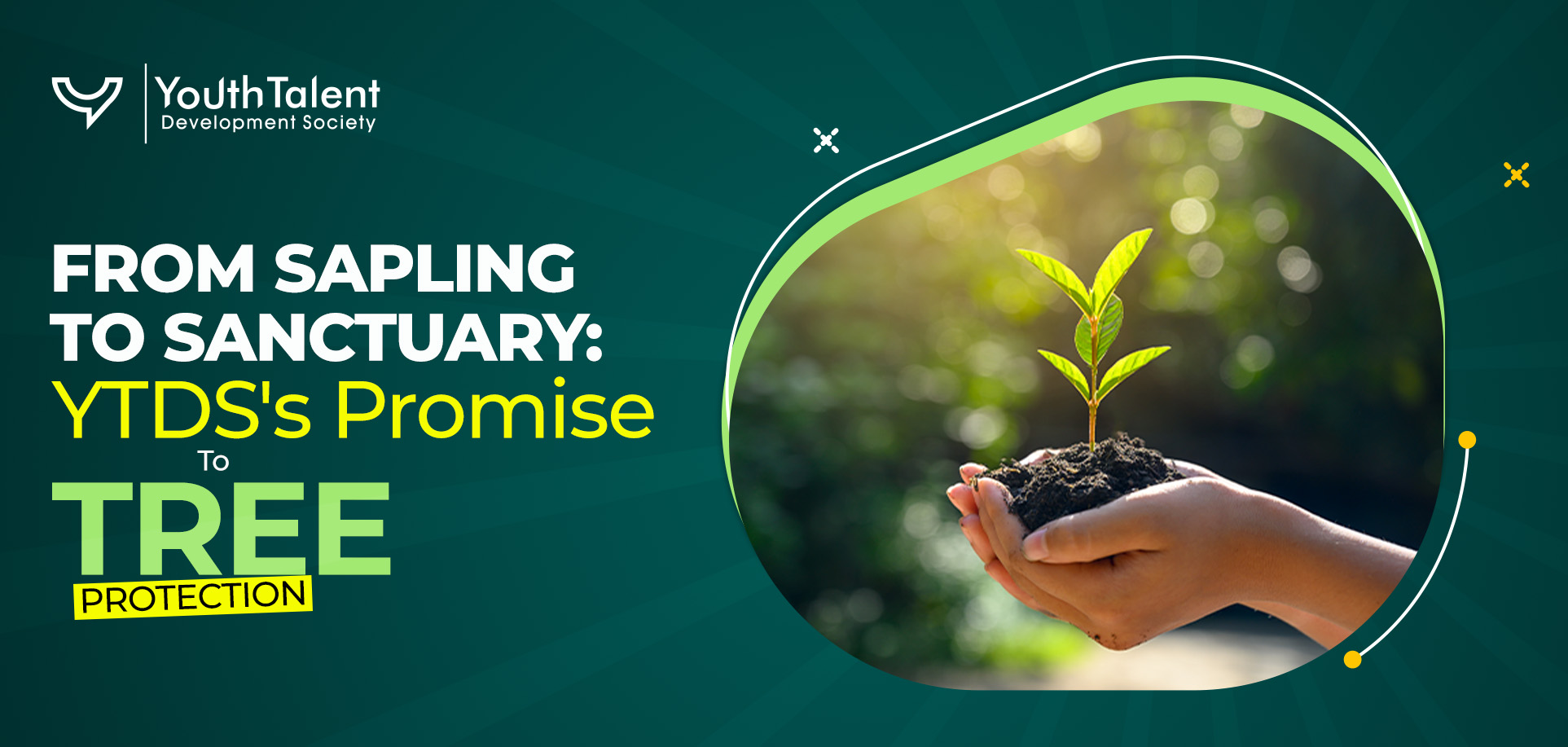
From Sapling to Sanctuary: YTDS's Promise to Tree Protection
Hey there, nature lovers! Today, let's dive deep into the world of tree care. It's more than just sticking a sapling in the ground; it's about fostering a lifelong relationship with our leafy friends. Whether you're a seasoned green thumb or just starting out on your gardening journey, come along as we explore the keys to ensuring your million trees thrive for generations to come. You see, planting trees is just the beginning of a beautiful journey. It's like welcoming a new member into your family—you've got to nurture and protect them every step of the way. So, whether you've got a backyard garden or a sprawling urban forest, let's roll up our sleeves and dive into the art of tree care together!
Unveiling Nature's Palette: Choosing the Perfect Tree Species for your Green Haven
Selecting the perfect tree species isn't just about aesthetics; it's about finding the right fit for your local environment. We'll explore the importance of native species and the benefits of biodiversity for creating resilient ecosystems. Native trees are well-adapted to the local climate, soil, and pests, making them more likely to thrive with minimal intervention. They also provide essential habitat and food sources for local wildlife, further enriching the ecosystem. When choosing tree species for your area, consider factors such as soil type, sunlight exposure, and available space. Consult with local horticultural experts or extension offices to identify suitable native species for your region. Some common native tree species include oak, maple, pine, cedar, and birch. These trees offer a range of benefits, from providing shade and habitat to enhancing air quality and water filtration.
Watering Wisdom:
Keeping your trees hydrated is essential for their survival, especially during those scorching summer months. Proper watering techniques can help prevent stress, drought, and disease, ensuring your trees remain healthy and vibrant year-round. The key is to water deeply and infrequently, allowing the roots to absorb moisture and develop strong, resilient systems. Before watering, check the soil moisture level by inserting your finger into the soil near the tree's base. If the soil feels dry to the touch, it's time to water. Use a slow, deep watering method to ensure the water penetrates the soil and reaches the roots. A soaker hose or drip irrigation system is ideal for delivering water directly to the root zone while minimizing runoff and evaporation.
Mulching Matters:
Mulch isn't just for looks—it's a crucial component of tree care. Mulching offers a wide range of benefits, from conserving moisture and regulating soil temperature to suppressing weeds and improving soil fertility. Organic mulches, such as wood chips, bark, and compost, provide valuable nutrients as they decompose, enriching the soil and promoting healthy root growth. When applying mulch, create a ring around the base of the tree, leaving a few inches of space between the mulch and the trunk to prevent moisture buildup and discourage pests. Apply a layer of mulch 2-4 inches thick, extending out to the tree's drip line if possible. Avoid piling mulch directly against the trunk, as this can lead to rot and disease.
Pest Control and Disease Prevention:
Every gardener's worst nightmare? Pesky pests and sneaky diseases. Fortunately, there are steps you can take to protect your trees from common threats and keep them healthy and thriving. Integrated Pest Management (IPM) techniques focus on preventing pest infestations through a combination of cultural, biological, and chemical control methods. Start by inspecting your trees regularly for signs of pests, such as chewed leaves, discolored foliage, or unusual growth patterns. Early detection is key to preventing widespread damage and disease. If you spot any signs of trouble, consult with a local arborist or extension agent to identify the problem and develop an appropriate treatment plan. In addition to pest control, it's essential to practice good sanitation and hygiene to prevent the spread of disease. Remove any dead or diseased branches promptly and dispose of them properly to prevent fungal spores and pathogens from spreading. Prune your trees regularly to promote air circulation and sunlight penetration, reducing the risk of fungal infections and insect infestations.
Volunteer Opportunities:
Ready to roll up your sleeves and get your hands dirty? We've got just the thing! Discover upcoming volunteer events hosted by YTDS and our partners, where you can join forces with fellow tree lovers to care for our urban forests. Volunteer opportunities range from tree planting and mulching to pruning and pest monitoring, offering a hands-on way to make a difference in your community. Volunteering not only benefits the environment but also provides valuable opportunities for education, skill development, and community engagement. Whether you're a seasoned green thumb or a novice gardener, there's a place for you in our tree care team. Plus, volunteering is a great way to meet like-minded individuals, build connections, and foster a sense of belonging and purpose.
Conclusion:
In conclusion, caring for your million trees is a labor of love—one that requires dedication, attention, and a whole lot of TLC. But with the right know-how and a dash of community spirit, we can protect and maintain our leafy companions for generations to come. So, let's get out there and show those trees some love! Remember, the journey doesn't end with planting; it's just the beginning. By nurturing and protecting our trees, we're not only creating healthier, more vibrant communities but also leaving a lasting legacy for future generations. Together, we can make a difference—one tree at a time.


